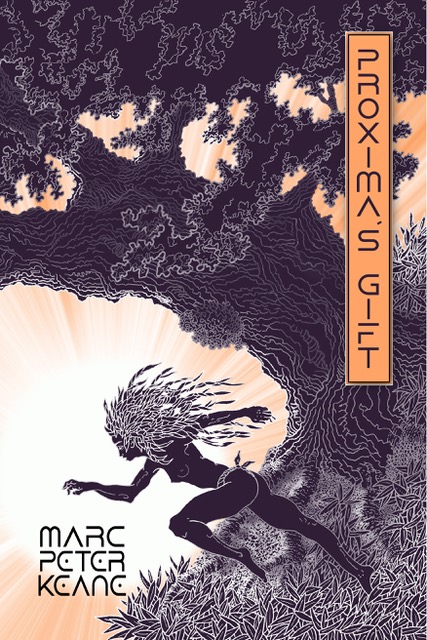A Book To Make You Think
We who have associations with Kyoto are familiar with Marc Peter Keane’s work. (Just as one example, I reviewed his book Of Arcs and Circles, Stone Bridge Press 2019, for Writers in Kyoto in December 2021.) Marc is a garden expert who has created many beautiful gardens, both in Japan and overseas, notably the Empty River garden in Honen’in Temple, Kyoto. His website may be found at www.mpkeane.com
This time Marc has written a novel, a lengthy one with a very interesting premise. Briefly, an epigeneticist working in a big facility near a big city experiences a life-threatening cosmic phenomenon which creates great anomalies in electrical power, meaning that the internet, etc. are no longer available as one example, and creates a temporary but devastating environment in which panic ensues and much life is lost. This woman, the researcher, manages to survive the ensuing weeks and to gather a group of fellow survivors with whom she travels into the countryside, knowing that is their only hope. Her research previously centered around the possibility of the electric field of eels being transferred through a virus to other life forms, and she injects herself with the virus quite early on to see what would happen, and later, some of the other survivors. The combination of this virus and the effects of the cosmic event result in a completely new form of human being.
Fast forward three hundred years, when the descendants of these survivors have formed their own civilization based on a kind of telepathy with other living things and each other, and learning about and caring for the cycles and infinite detail of the great Nature, not only visible organisms but also the great network of living things underground, that they find themselves a part of.
Each chapter has both a section about that far-off future society, with inspiring passages about how Nature revivifies itself, and also a section about the way that it began: notes of the researcher at a university surviving a cosmic event, injected with a special virus that has vast consequences for this remnant of humanity, travelling with a group of survivors who formed the ancestors of that future society.
Without going into too much detail, I can see that this visionary book carries us on two pathways, that of the survivors of the cataclysmic cosmic event and of their future descendants. As a person who lives in the countryside of Japan and has often lamented at the state of nearby mountains which were once so painstakingly cared for and now are nothing at all to the vast majority of the population, I rejoiced to read the accounts of people for whom every living thing, every cycle, are of great importance and must be observed meticulously, and for whom the richness of the land, and its gods, are living and important parts of the human beings’ lives.
The society created draws upon many taproots of our society as well as on its major system, that of Nature itself; the language of the descendants, which the author depicts sparingly, has a few words from other languages as well as Japanese mixed in, and it is a good mental exercise to imagine what the original word might have been. (I communicated with Marc on this subject, and he admits a fondness for books with language anomalies which must be figured out; but for non-Japanese speakers, he has created a lexicon, downloadable from the website, in a PDF file of words used and their ordinary English meanings.
A quote from the researcher who has led the small group of survivors past an erstwhile nuclear power plant, the area around which is dusty and lifeless, a hellish landscape:
“… reminded me of the ancient chronicles … life and death, all the same thing. Two faces of the same coin. susanoo, the god of the sea, is unhappy and searches for hahanokuni, the land of his mother. to find it, he must enter yomotsukuni. the path to life is through death… this godforsaken place is not a mistake, or a challenge. it is none other than the very road we need to take.”
Marc Peter Keane has drawn on his considerable knowledge of Japan and Nature to create a very thought-provoking book of great breadth and depth. The book is divided into six parts, each of which begins with a Japanese seasonal word and illustration by the author, very evocative and beautiful. The cover is also his illustration.

